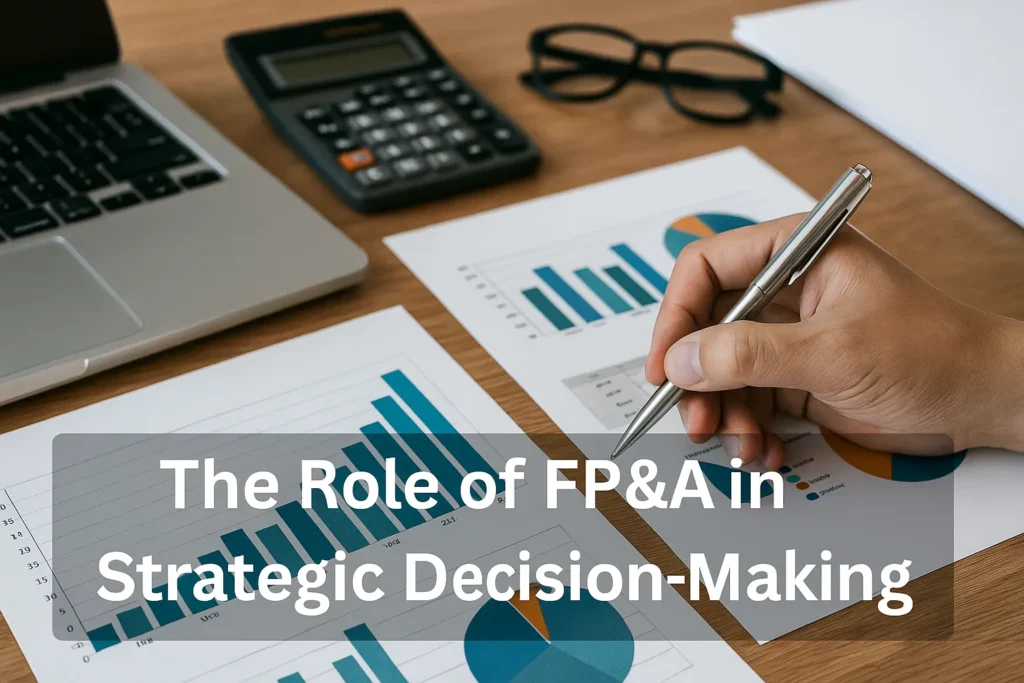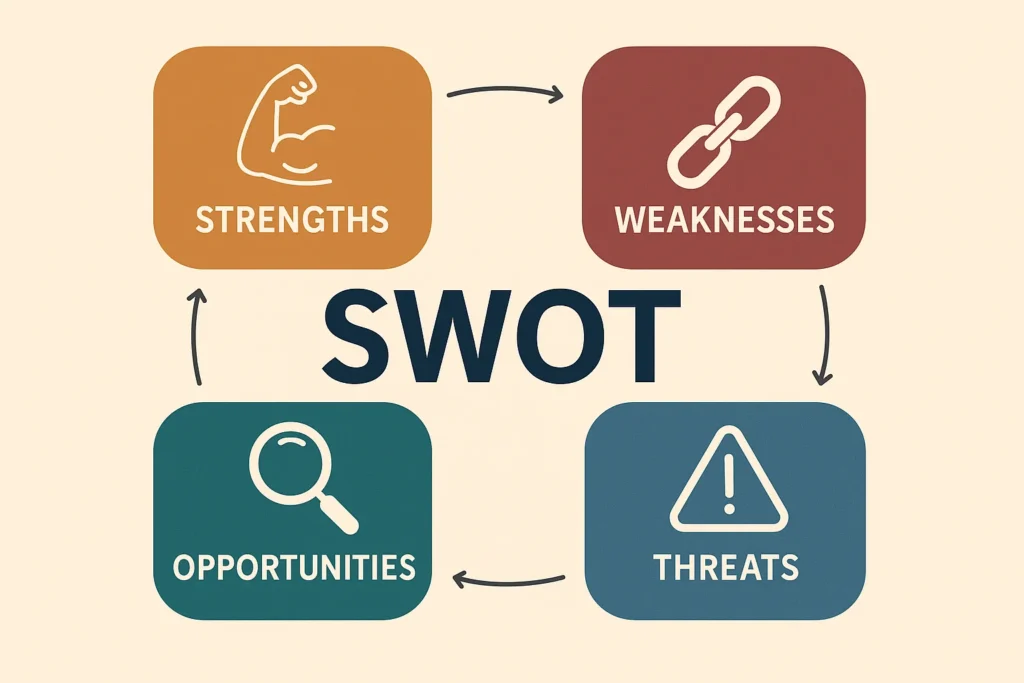Financial Planning & Analysis: Secret to Scaling Your Business Successfully
Scaling a business is exciting, but without careful planning, it can lead to financial chaos. Financial Planning & Analysis (FP&A) is the backbone of any smart scaling strategy. It enables you to make informed decisions based on data, forecast future trends, manage risks, and ensure that your business grows sustainably. Whether you’re a startup founder or a seasoned entrepreneur, mastering FP&A helps you scale wisely without compromising stability.
The Role of FP&A in Strategic Growth

FP&A goes beyond just managing spreadsheets—it’s about transforming numbers into insights. When properly applied, it becomes a tool for setting realistic financial goals, understanding performance gaps, and determining where to allocate resources for maximum return. With a robust FP&A system, companies can translate vision into action and action into measurable success. In today’s competitive market, this analytical clarity isn’t optional—it’s essential.
Sustainable Growth: Foundation of Smart Scaling
Before diving into financial tactics, it’s vital to understand the concept of sustainable growth. This isn’t about growing as fast as possible—it’s about growing at a pace that your operations, finances, and infrastructure can handle. It means balancing expansion with internal stability. Sustainable growth requires deep knowledge of your market, customers, competition, and your team’s capabilities. FP&A supports this by continuously monitoring business health and alerting you before cracks begin to show.
Market Research and Segmentation
Every growth plan must begin with a strong understanding of the market. FP&A supports detailed market analysis to identify customer needs, track industry trends, and monitor competitors. Through segmentation, you can divide your audience into specific groups, making it easier to tailor your products, services, and marketing. This ensures that your growth efforts are laser-focused rather than scattered—helping you get more results with fewer resources.
Use SWOT Analysis to Sharpen Your Strategy

One powerful tool within FP&A is SWOT analysis—evaluating your business’s strengths, weaknesses, opportunities, and threats. This holistic view allows leadership to address internal gaps, take advantage of new opportunities, and shield the business from external threats. As your business grows, regularly revisiting your SWOT keeps your strategy relevant and adaptive to the market landscape.
Customer Retention and Acquisition
Scaling isn’t just about attracting new customers. Customer retention often delivers higher ROI than acquisition. Use FP&A to track customer lifetime value, churn rate, and satisfaction metrics. At the same time, FP&A enables the financial planning behind new customer acquisition strategies—whether it’s launching a referral program, expanding into new territories, or partnering with complementary brands. A balanced approach strengthens both your customer base and revenue stability.
Accurate Forecasting for Business Growth
Forecasting is the engine of FP&A. With accurate forecasts, businesses can anticipate demand, plan inventory, allocate staff, and set realistic targets. Best practices include:
- Using historical data as a foundation
- Incorporating market trends and economic indicators
- Building multiple scenarios (best, base, and worst case)
- Reviewing and updating forecasts regularly
This level of planning helps businesses prepare for what’s ahead instead of reacting to what just happened.
Building a Financial Model That Works

A solid financial model acts like a compass for decision-making. It should include projections for revenue, expenses, and cash flow—plus key performance indicators (KPIs). FP&A ensures that your model isn’t just a static report, but a dynamic, ever-evolving reflection of your business. It guides everything from marketing budgets to hiring plans, ensuring that every rupee or dollar spent is driving value.
Allocate Capital Wisely
It’s tempting to throw money at every growth opportunity, but smart businesses use FP&A to allocate capital strategically. That means investing in areas that promise high ROI—like launching a profitable product line or entering a growing market—while avoiding financial overreach. FP&A helps assess which opportunities align with long-term goals and how to finance them effectively without sacrificing stability.
Mastering Cash Flow Management
Scaling without managing cash flow is like building a house on sand. Even if revenue is growing, delayed collections or uncontrolled spending can bring the whole thing down. FP&A supports real-time cash flow tracking, forecasting, and planning—ensuring that your business always has enough liquidity to fund operations, seize new opportunities, and weather tough times.
Identify Cost-Saving Opportunities
FP&A can play a huge role in improving profit margins by identifying where the business is bleeding money. This includes automating redundant tasks, renegotiating contracts, or phasing out underperforming products. At the same time, it helps highlight your most profitable offerings so you can double down. Profitability isn’t just about earning more—it’s about spending smarter.
Optimize Pricing with Data-Driven Insights
Pricing can make or break your business. FP&A helps optimize pricing by analyzing customer behavior, market standards, and cost structures. This ensures you’re not leaving money on the table or driving customers away. Through A/B testing, competitive analysis, and elasticity studies, FP&A ensures your pricing strategy is both competitive and profitable.
Collaborate Through Strategic Partnerships
Strategic alliances allow you to scale faster without stretching internal resources. FP&A helps evaluate potential partnerships based on risk, return, and alignment with your goals. Whether it’s co-marketing, joint ventures, or distribution agreements, partnerships reduce entry costs and increase your reach—making them a smart component of any scaling strategy.
Scalability Analysis
Every business has a ceiling—until it breaks it. FP&A helps analyze how scalable your current operations are. Can your systems handle 10x the volume? Do you have enough space, staff, or server capacity? By identifying these bottlenecks early, FP&A allows you to upgrade infrastructure proactively instead of reacting when it’s too late.
Risk Management and Scenario Planning
Growth invites risk—whether it’s financial, operational, or competitive. FP&A includes scenario planning that allows you to model the impact of risks and create mitigation plans. From supply chain disruption to regulatory changes, you can prepare for the worst while working toward the best. This makes your growth not just ambitious, but resilient.
Smart Debt Management
Scaling often requires outside funding, but poor debt management can crush future growth. FP&A helps businesses identify favorable loan options, structure repayments, and ensure that debt remains manageable. It also allows you to maintain a healthy mix of debt and equity—balancing risk and return in your capital structure.
Invest in Technology for Scalability
Technology is not a luxury—it’s a growth multiplier. FP&A supports tech investments by measuring their impact on productivity, costs, and customer experience. From cloud software to automation tools and CRMs, the right tech stack can scale with you—making your operations smoother and your decisions sharper.
Employee Training and Development
Employees are a company’s most valuable resource. FP&A helps budget for training, measure productivity, and align workforce planning with business goals. Well-trained teams are more efficient, adaptable, and loyal—qualities that are invaluable when scaling. Investing in people is not just good ethics—it’s smart business.
Stay Relevant with Ongoing Market Research
Markets don’t stand still, and neither should your strategy. FP&A supports continuous market research to monitor industry shifts, consumer behavior, and new technologies. By staying informed, your business can pivot faster, seize new opportunities, and maintain a competitive edge even as the landscape evolves.
Conclusion
At the heart of any sustainable growth plan lies strong Financial Planning & Analysis. It turns data into decisions, forecasts into actions, and growth into stability. From managing cash flow and allocating capital to pricing products and preparing for risks—FP&A ensures your business grows smarter, not just faster.






